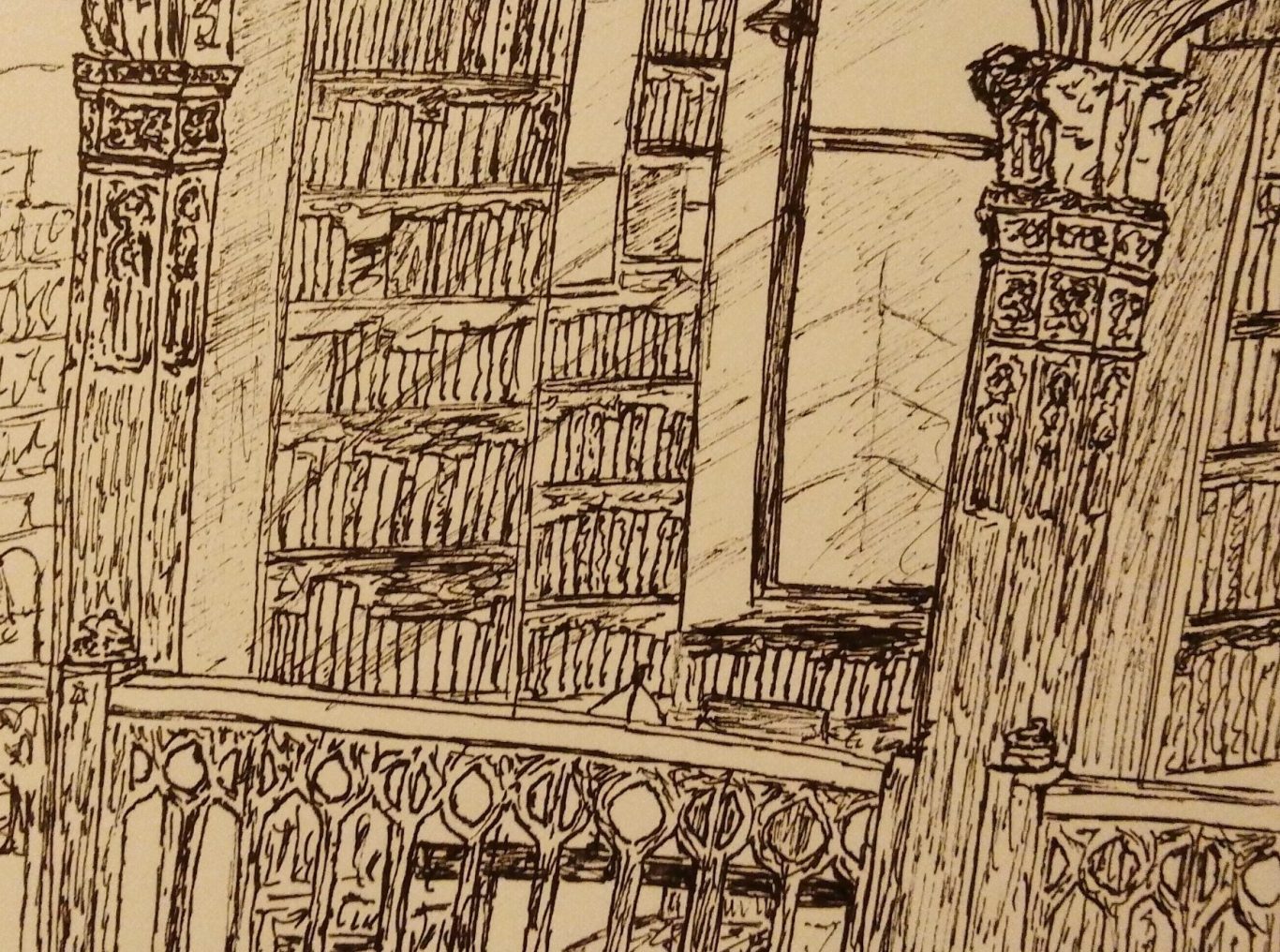
What I read
Books that intrigued, fascinated, entertained or delighted me
A lot of people are curious about how others order their books. Some prefer to put them by colour, some split theirs into fiction and non-fiction, some go for arranging them in alphabetical order, some have secret shelves behind those visible where they put books they don't want on immediate display, some place their books higgledy-piggledy...
I could go on and on. As varied as the readers, as varied will the shelves be. It is part of the fun of entering a house and being confronted with books.
For my part, I go for categories with no alphabetical order. Within those categories I may break things down further, which allows me to locate a book with relative ease and without too much difficulty.
Take for example The Penderwicks on Gardam Street by Jeanne Birdsall, one of my absolute favourites and a regular autumn re-read. You would find this on the children's and young adults bookshelf in the 'cheerful sort-of-books' section. If you were - on the other hand - looking for The Burying Beetle by Ann Kelley, you'd search the section above, which houses the 'trickier and/or challenging reads'. For Debi Gliori's Pure Dead Magic you'd look lower down the shelf and into the fantasy section, which starts with younger readers and then segues into Jonathan Stroud's Bartimaeus Trilogy starting with The Amulet of Samarkand.
It may sound confusing but is incredibly helpful if you are a 'mood reader' and just feel like something cheery or darker or more challenging. All you have to do is go the correct section and browse.
As this is a section on what I read, every book presented here will have the title, author name, an introduction as to why I like it and a shelf (or more) it could go on.
Let's demonstrate the shelving principle with Rosie and the Secret of the Snogard ;-)
Shelf: comfy-sort-of-book (adults & children); traditional stories; fantasy (dragons & mythical creatures); mystery; pick-me-up-reads; sense of place
And now I cordially invite you to take a look at some of the books on my shelves.
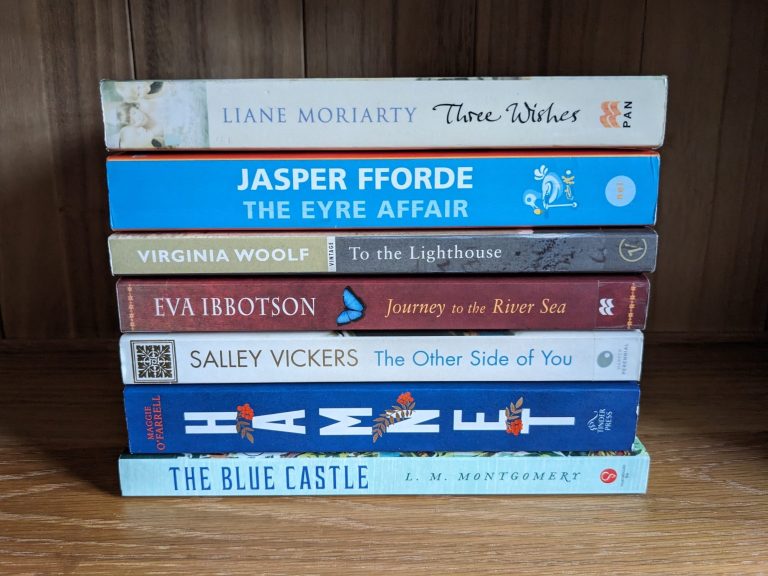
Let's start with these:
I have never been particularly good with beginnings or picking out only a few books among the many I like but these seven feel like a good way to start.
Among them are some of my favourite authors, books and stories. Nearly all of these I have read more than once, twice, forgotten how often...
In some instances they have been part of my life for more than two decades.
They are also all books that I have given copies of to friends and/or family, as I wanted to share these stories and quite often find that a well-placed copy in someone's home is more persuasive (and tempting as it's there!) than a mere recommendation.
To the Lighthouse - by Virginia Woolf
This book was the set book for our "Introduction to English Literature" course in our first year of study and I was entranced by the writing from the moment I started to read it.
According to the Vintage Classics copy I now own, To the Lighthouse is the most popular of Virginia Woolf's novels and - of those by her I've read so far - my favourite.
What draws me is not only the setting but also the place and inner worlds that the characters inhabit. It is one of those books that offers a temporary glimpse into the lives of various people - all connected to one another by the Ramsays - and weaves it into a tapestry of a particular way of being in a now lost era.
Another aspect that fascinated me about this book were the musings on time; the way it passes despite it being implored to stand still. The awareness that time must and will pass.
For me this feels reminiscent of the philosophical ideas on time - the felt and the measured time - expressed in the works of philosophers such as for example Henri Bergson and Edmund Husserl, which informed a lot of the modernist writings in the first half of the 20th century. Echoes of these different thoughts on time permeate the whole book, making it more fascinating.
In addition to that the images and the sense of place it conjures linger in the mind; embed themselves within the reader.
It's hard to describe its peculiar lure but for anyone interested in exploring Virginia Woolf's work I'd start here.
Shelf: glimpses of the 20th century; reflective & unhurried books; strong sense of place
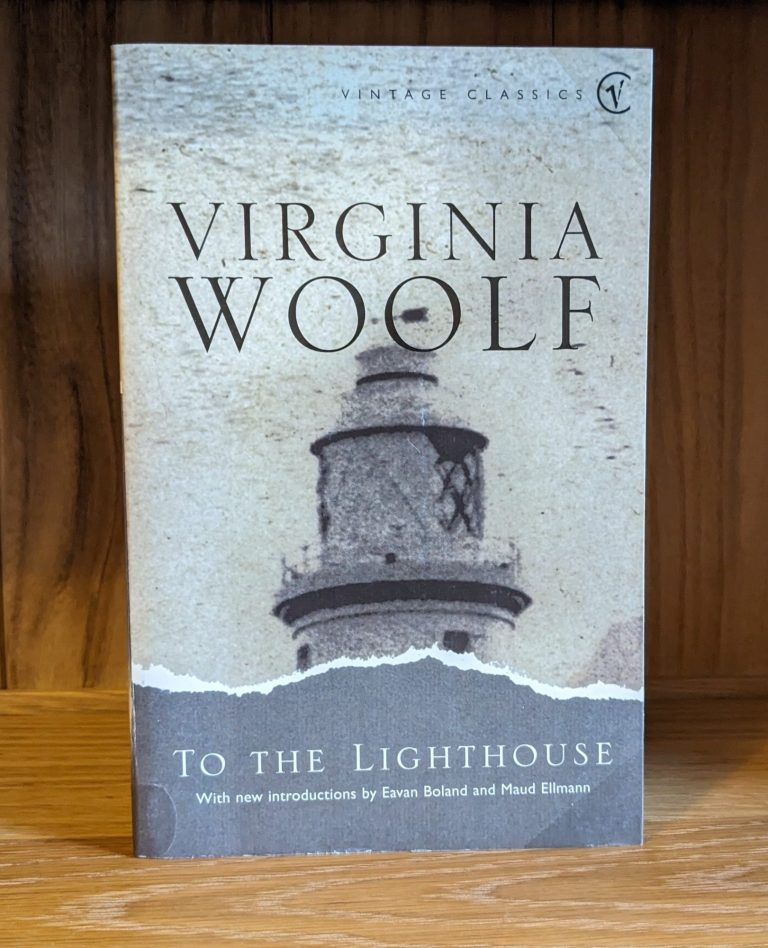
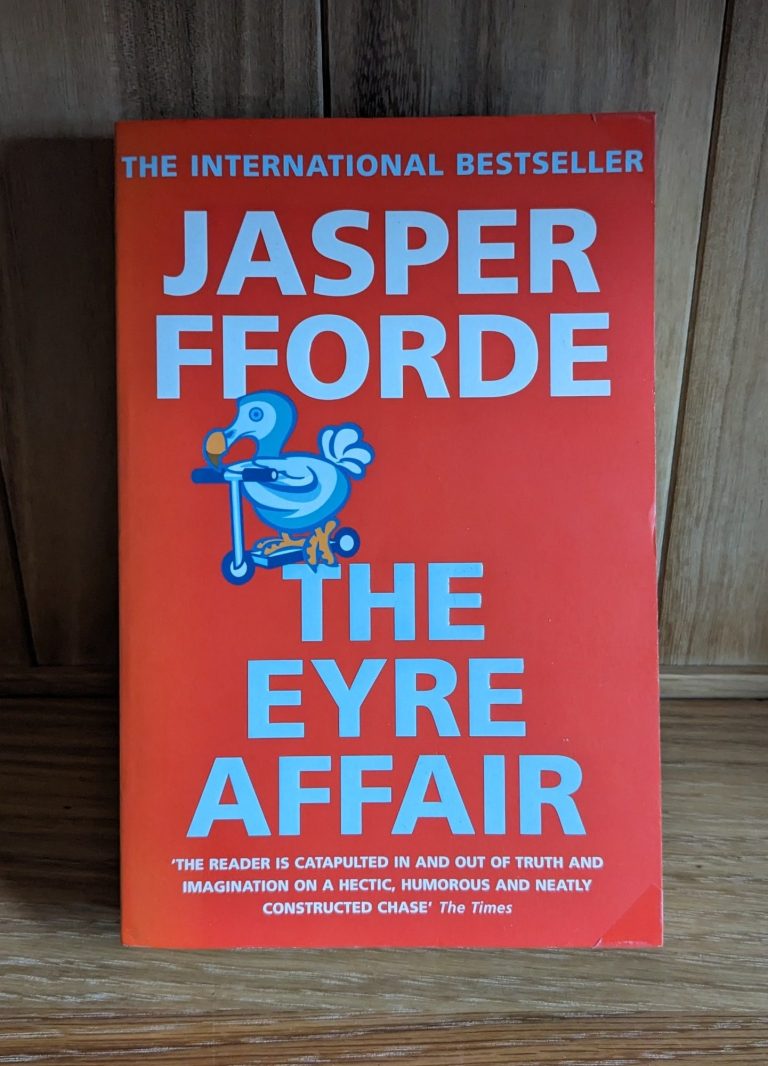
The Eyre Affair - by Jasper Fforde
I have to admit that the scooter on the cover has confused me for over two decades and I have still not found an answer to why it is there.
The dodo is obvious once you start reading as the heroine of the book - a woman called Thursday Next - owns a pet dodo named Pickwick (reengineered via a home-cloning set when it was all the rage).
And with this you are already on the roll and full on in 1985: a world where people are crazy about literature, the Goliath Corporation 'benevolently' rules (almost) supreme, the Crimean War between England and Imperial Russia is still ongoing and the Welsh borders are safeguarded vigorously against the English and that's only for starters.
Apart from 'delightfully and absolutely, gobsmackingly nuts in the best possible way' the book is so hard to categorise that I found it in bookshops in the general fiction, fantasy, crime & thrillers, humour and science fiction section. I've been wondering if I should smuggle it into the romance or literary section as well at some point, just to complete the picture.
Jasper Fforde's books are a fantastic romp and highly entertaining. I chose this one as an introduction to his work as it was the first of his books that was published and still holds up to re-reading many years after the first time.
Though published first, it was not the first book Jasper Fforde had written. Apparently he had 76 rejections - over a course of seven years for a few books - until finally getting accepted by a publisher. I seriously admire his stamina in getting his books out there and am so very glad he had that level of perseverance!
In a nutshell: The Eyre Affair is a brilliant, hilarious and sometimes mindboggling read with many twists and turns and a seriously good sprinkling of literature, weird history and excitement. A prior knowledge of Jane Eyre is handy but not absolutely essential.
(And if you get curious about the "book-world", you can follow up The Eyre Affair with Lost in a Good Book - its sequel - and deepen your journey into that particular world of the weird. )
Unsure if it's for you? Why not try reading the first chapter and see if you can stop?
Shelf: a shelf-of-its-own; alternatives which cover only parts may be: the crazier side of fantasy/science fiction; detective/mystery stories; fantasy science; bizarre and highly entertaining reads; might-draw-looks-when-read-on-public-transport-due-to-book-induced-laughter
The Other Side of You - by Salley Vickers
Salley Vickers's fourth novel, The Other Side of You, is the one that - according to her at the time - took her the longest to write. It is also my favourite by her so far, the one that I connect with most deeply and consequently re-read most often.
The book is divided in four parts of varying length and narrated in the first person by David, who is both a psychiatrist and a trained analyst and whose 'particular bent' are suicide cases. They resonate with the hidden ‘other' side of him.
The story opens with David’s reminiscences about a past patient, Elizabeth Cruikshank, whose essence – many years on - he still finds hard to capture.
A serious suicide case who only just got found in time, Elizabeth has drawn a mantle of silence around herself, hinting at pain that goes very deep. It is not until a chance observation, relating to a painting by Caravaggio, opens up a brief window into her world that her story is finally revealed and explored.
One of the things I find fascinating is how immediate the story feels straight from the opening and the very first chapter; the way it - and its echoes of death, loss and grief - weaves its way into the reader's mind and stays there.
Despite - or perhaps because of - its premise, it does something I consider rare in fiction: it starts at a character's lowest point and works towards a resolution; a more mature and positively integrated state of being. As such it feels almost therapeutic.
It is also a fascinating but unassuming read, the book working on the reader the same way Elizabeth Cruikshank's person works on David.
I read this book at different stages in my life and its language, characters, subtle humour & observations and story captivates me each time, dovetailing in my mind. It is one of my absolute favourites.
Shelf: psychologically interesting but not depressing; perennial favourites; mesmerising reads
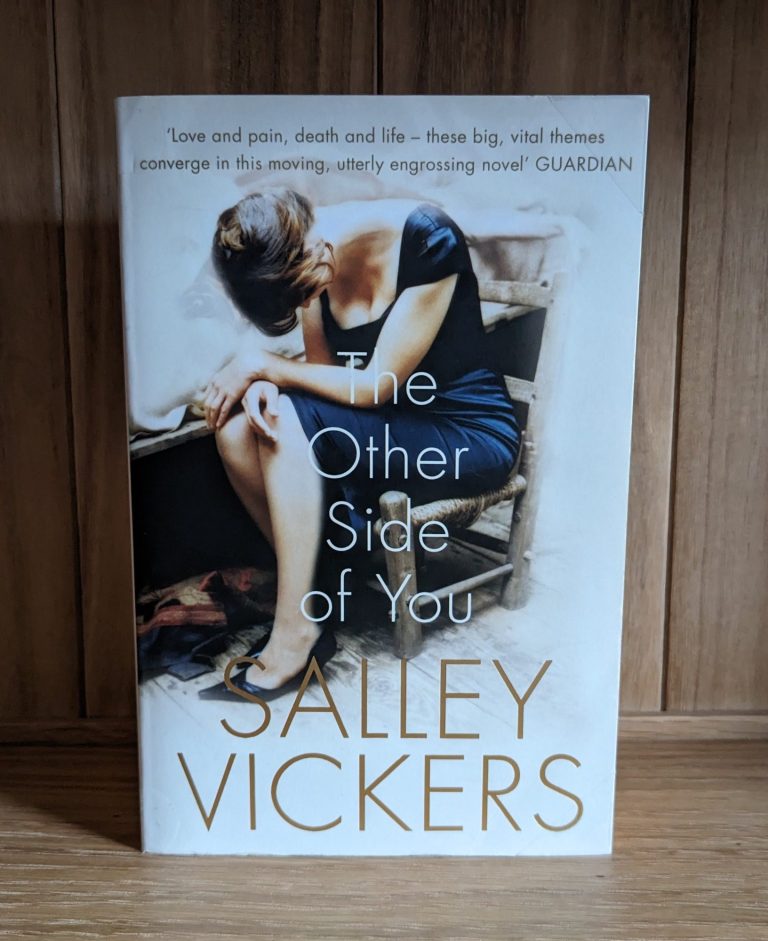
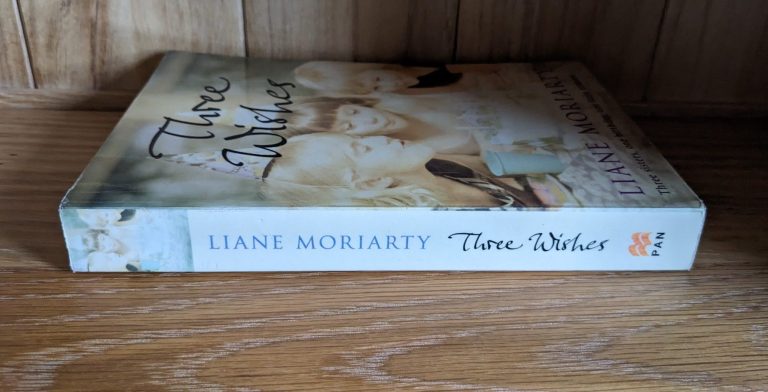
Three Wishes - by Liane Moriarty
Let's get one thing out of the way at the beginning: I really don't like this cover.
My main quibble is the fact that the story of Liane Moriarty's first novel is about triplets: one set of twins and the 'odd' egg, who her twin sisters - as children are wont to do - once told that she was adopted. So a cover with three girls whose age so clearly differs is annoying, but it's the copy I own so there we are.
The book itself had me hooked from its hilarious prologue to the last page. It also meant that Liane Moriarty was one of those authors whose books' publication (like those of the two previous authors mentioned here) I awaited eagerly.
Three Wishes follows roughly a year of the three Kettle sisters' life and starts on their 34th birthday and an argument, which - memorably - culminates in a fondue fork being thrown by one of them.
This launches into a 'how it all began' and introduces us not only to the Kettle sisters and their family but also muses on the bond of sisters and on what who knows about or from others within a family; and what is hidden and/or unknown.
What makes it so highly readable, is that it combines laugh-out-loud comedy with real-life problems and even a darker seam in the narrative without getting bogged down by it. It stays light but has depth at the same time.
An aspect I particularly like about this book, are the little titled musings and stories, narrated by other people who observe the triplets and their family, that are interspersed between chapters. These glimpses of someone else's view of an event are intriguing with regard to the story being told but also hint at that narrator's story; the possibility of another story within a story within a story so to say.
It is a great place to start your journey into Liane Moriarty's work and is - along with What Alice forgot - still one of my favourite go-to pick-me-up reads.
Shelf: pick-me-up reads; sisters; family tapestry; entertaining reads; cheery but with depth
Journey to the River Sea - by Eva Ibbotson
This book is another of my absolutely favourite stories. It manages to achieve that fascinating balance between the classic story of an orphan - thrust into a new world that is different from her expectations - and a heart-warming and multiple-layered story, which feels incredibly fresh and comfortingly familiar at the same time.
Journey to the River Sea is a story that - according to Eva Ibbotson - had been playing on her mind for years before she finally wrote it and was one of her last books. Of the books by her I read, this one is my all-time favourite and the one I have given to quite a few children and adults of my acquaintance.
It tells the story of Maia - orphaned and living at a boarding school in London when we first meet her - who travels to Brazil to start a new life with some unknown relatives. She is accompanied by Miss Minton, a governess of forbidding looks with whom she clicks from their first meeting. What follows is a story that is full delights and dangers, enchantment and excitement, fascinating details and many twists and turns; just like the Amazon river the title of the books refers to.
To tell too much about the plot would spoil it for new readers but if you feel a draw to the stories of Frances Hodgson Burnett and to L. M. Montgomery's Anne of Green Gables, then this story may very well be for you.
Ibbotson's story has that old-world charm of those classics and a spark of humour to it that makes it a delightful and highly rewarding read (and re-read...). It is also very exciting!
Shelf: old-world-charm; adventure stories; future classics; comfy-sort-of-book; pick-me-up-read; books for children & adults; sense of place

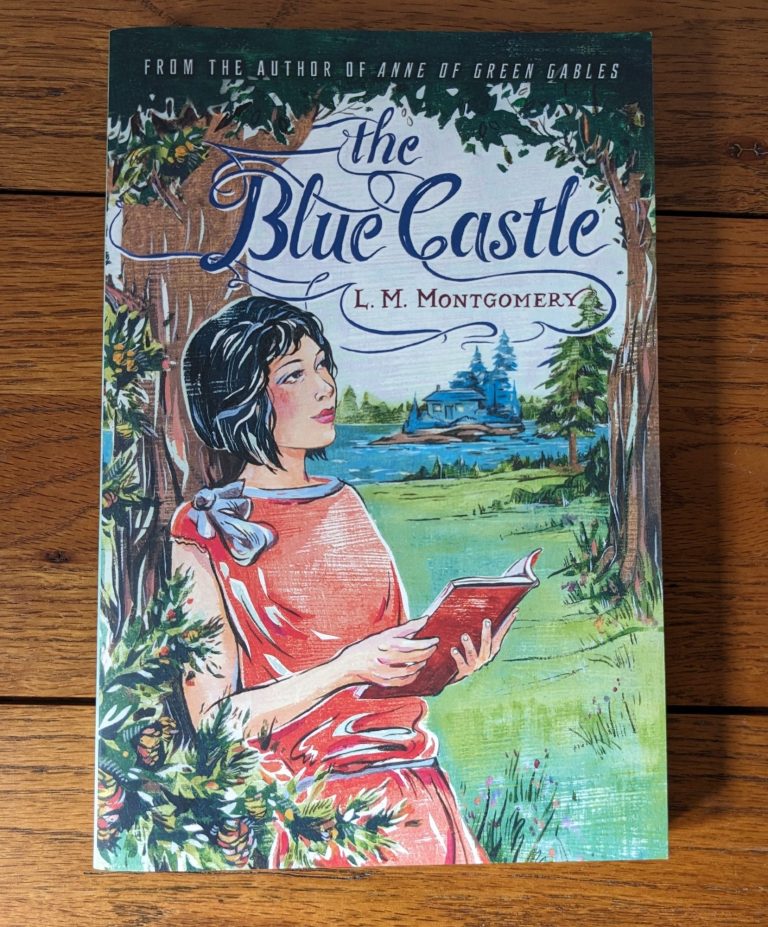
The Blue Castle - by L. M. Montgomery
This book - the first I read by this author - ended up in my recommendations one day. As the blurb, and admittingly the cover, appealed to me I ordered it and am very glad I did.
The story focuses on Valancy, who is 29 years old, unmarried and lives with her very controlling mother and a widowed cousin in a miserable house, without any prospects of this ever changing. One day, encouraged by a passage she read in a library book, she takes a decision that would scandalise her clan and a very different possibility of living her life opens up to her.
The book is a quiet but also very wittily observed story of a woman choosing her own path, free from the customary restraint she endured previously. It feels very fresh and does not at all give the impression of being almost a hundred years old. The nature descriptions contained in it breathe life into the Canadian seasons and allow you to witness them in the same way Valancy does through the writings of her favourite writer John Foster.
It is also a book about second chances, the company of people attuned to you and one of the most beautiful books I have read. It is a story you can return to again and again and an absolute gem.
Shelf: unusual 'coming-of-age' book; atmospheric reads I came across by accident; comfy-sort-of-book; friendship-love & finding yourself; sense of place
Hamnet - by Maggie O'Farrell
I have wondered about the possible connection between the name of the play and that of the famous playwright's son for quite some time. So despite the fact that I tend not to read books that can be classed as 'historical' novels, I couldn't resist buying this one.
Then, knowing what had happened to the real-life Hamnet in summer 1596, I was unable to bring myself to read it for a long time. So it stayed in one of the piles of unread books until a friend of mine suggested I move it up on my reading list. Intrigued by the way he said it I did and am so glad I listened to him.
This reimagining of what might have been is a rare work that will stay with you long after you finish reading it. I am fully aware of the fact that this is what a lot of reviews say about books, but in this case there is no other way to describe it: the way the characters come alive between the pages, the atmosphere that is conjured by the words used to describe the everyday life in the 1590s and 1580s, the way you seem to feel and smell the place; how you can practically see the motes of dust dance in that shaft of sunlight falling through the window into the house.
For anyone unsure about what to expect - and without wishing to give too much away - it feels like going on a journey. One that alternates between the now - Hamnet in the summer of 1596 trying to find help for his twin sister Judith - and their parents' story - a young Latin tutor with worlds inside him falling for an unusual woman, eight years his senior, before moving beyond both of these events.
It has been a long time since a book got under my skin the way this one did; I lack the words to do it justice. The story felt utterly mesmerising, captivating and haunting. More importantly, it holds you, compelling you to observe what is happening to those people you meet, as if you are standing just a little to the side of a stage, enthralled by the action unfolding and unable to turn away.
It touches you, leaving a trace - like an imprint - as evocative as the play, its author and his family, whose names and experiences linger in the readers' minds long after the book is closed.
Shelf: Shakespeare and his time, mesmerising reads, atmospheric reads that captivate and reach inside you
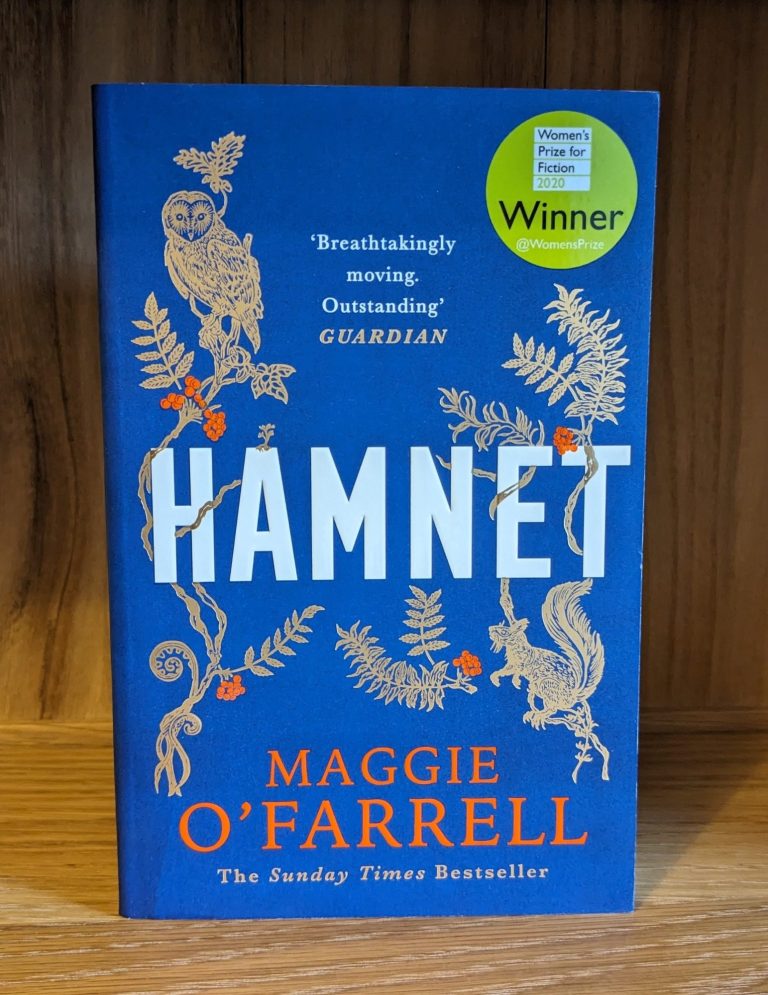
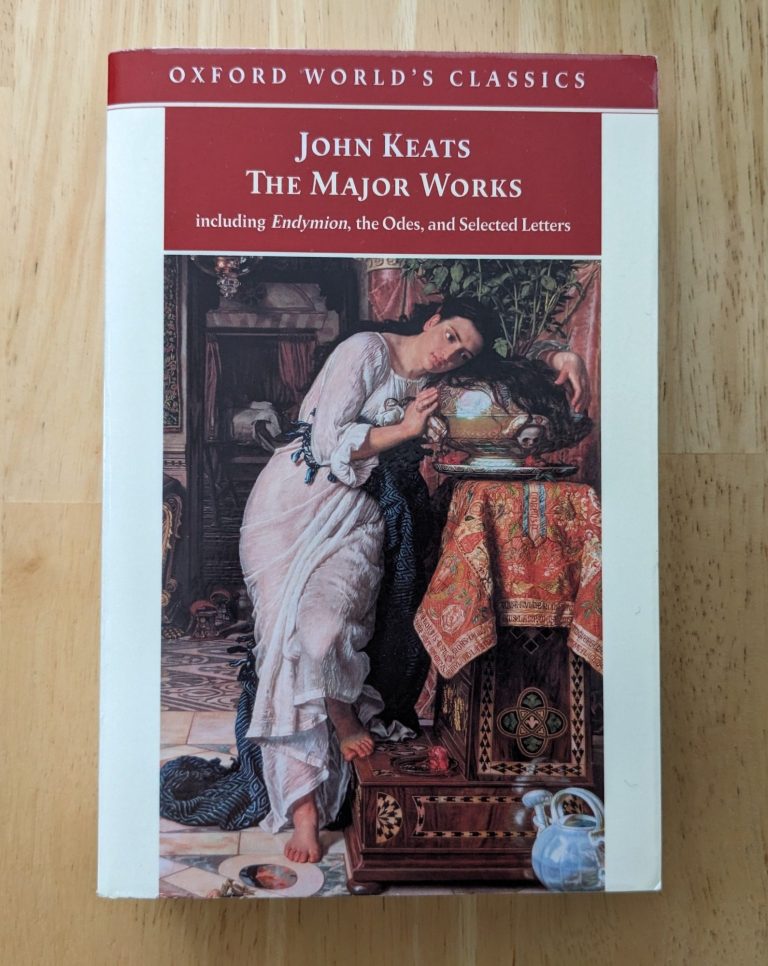
The Major Works – John Keats
The copy on display here, is the one I splashed out on for a seminar on John Keats’s poetry, which had this as the suggested text. Up until then I had only ever owned a small - but very practical pocked-sized – volume, which contained most of the sonnets, odes and some extracts from longer poems. It was one of my most re-read and influential books for a few years.
You can lose yourself in the beauty of Keats’s language, words and imagery; in the moods he expresses and captures. His poetry truly - to use a word from his letters - ‘dovetails’ in your mind.
John Keats was the youngest of the second generation of English Romantic poets and in my opinion his poetry far outshines that of Lord Byron and Percy Bysshe Shelley. Like the latter’s, Keats’s poetry only became really popular after his death especially when it was taken up by the Pre-Raphaelite Brotherhood. The image on the copy shown here is of one of William Holman Hunt’s paintings based on Keats's “Isabella; or The Pot of Basil”.
What I personally find almost as fascinating as his poems are some of the ideas expressed in his letters, particularly the concept of Negative Capability.
This is famously described in a letter from December 1817 to his brothers George and Tom Keats in these words: “at once it struck me, what quality went to form a Man of Achievement especially in Literature & which Shakespeare possessed so enormously – I mean Negative Capability, that is when man is capable of being in uncertainties, Mysteries, doubts, without any irritable reaching after fact & reason”. This quality, in his view, allows an artist to create and influenced the view of many artists who came after him.
For anyone interested in reading some Keats but unsure where to start, I’d go for: “Ode to a Nightingale”, “To Autumn”, “To Hope”, “La belle dame sans merci”, “Isabella; or The Pot of Basil”, “When I have fears that I may cease to be” or “Sonnet to Sleep”.
A lot of these contain lines that a reader or listener will recognise. "Isabella" retells a story from Giovanni Boccaccio's Decameron.
The language of Keats is one to fall into, explore and revel in.
Shelf: poetry; the beauty of words
(Source of quote: Keats, John; The Major Works; Oxford World’s Classic, Oxford University Press, 2001, p. 370)
If you ever happen to be in the northwest of England with some time at your hands and enjoy exploring art: the Lady Lever Art Gallery in Port Sunlight and the Walker Art Gallery in Liverpool have some stunning examples of Pre-Raphaelite paintings that can easily vie with those in London.
https://www.liverpoolmuseums.org.uk/lady-lever-art-gallery
https://www.liverpoolmuseums.org.uk/walker-art-gallery
If you are curious to know what other books live on my shelves, please visit Merrydale's Corner again next month for the next book.
© Copyright 2024-2025. All rights reserved. Designed by Eva for TRAIGH BAN
We need your consent to load the translations
We use a third-party service to translate the website content that may collect data about your activity. Please review the details in the privacy policy and accept the service to view the translations.